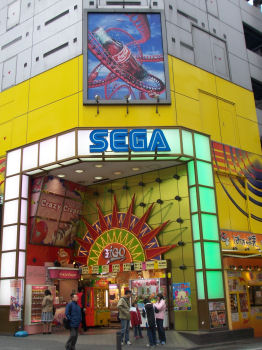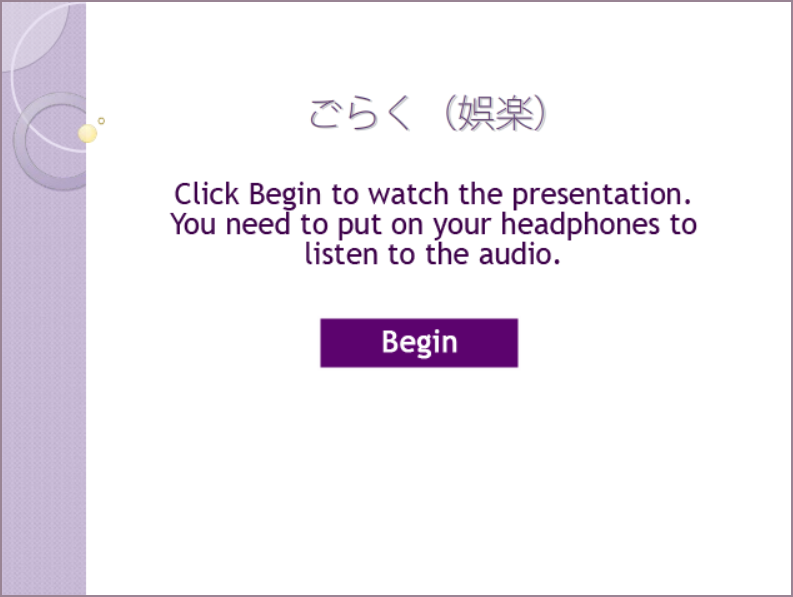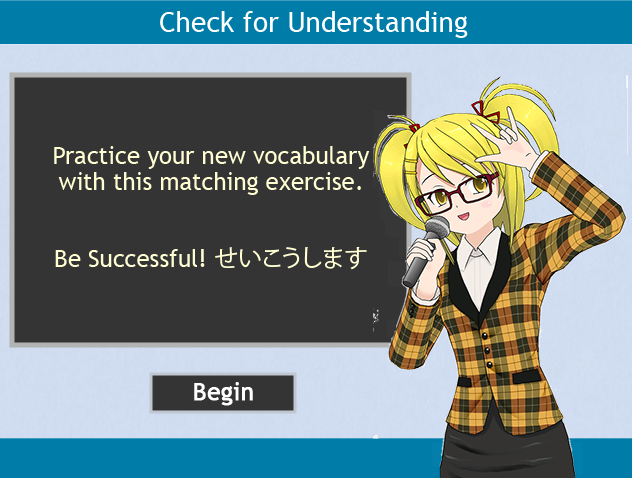![]() Entertainment Activities
Entertainment Activities

There are many things that people living in Japan like to do. Eating out, singing karaoke, going to theatres, concerts, movies, operas, symphonies, and much more are common activities that Japanese people enjoy. In this unit, we are going to learn more about these activities and learn to talk about things people like to do.
![]() Vocabulary
Vocabulary
Here are some common vocabulary words associated with entertainment to begin your studies in this unit. Click each Play button to listen to the words. Remember to always “listen and repeat out loud” with audio links in the textbook to help practice listening and speaking out loud.
 |
 |
 |
 |
サーカス
|
ピエロ
|
えんげき(演劇)
|
おどり(踊り)
|
 |
 |
 |
 |
パーテイー
|
オペラ
|
レストラン
|
どうぶつえん(動物園)
|
![]() Types of Entertainment
Types of Entertainment
View the presentation to learn more about activites in Japan. Click Presentation or click Begin below.
Here is a print version of this actvity. You will still need to use the online version to hear the words.
![]() Eating Out
Eating Out
It is very polite for a host or hostess of meal to say めしあがってください(召し上がって下さい)to guests to mean “Please eat (all you want)”.
Japanese people traditionally (and politely) say いただきます (頂ききます)before eating. It’s a way of saying “I humbly receive” the meal, or in more straightforward but not literal terms “Let’s eat”. You will want to remember this so that you can say it prior to eating when you are with Japanese friends or even in Japan.
After the meal, it is also polite to say ごちそうさまでした(ご馳走様でした). It means something like “Thank you for the meal or feast” or in more straightforward but not literal terms “It was delicious.”
Before a "toast" (before drinking a beverage) in Japan it is also typical to say かんぱい(乾杯).
Many people like to eat out. Read the following conversation and review the vocabulary used when in a restaurant. Then answer the questions below.
ひろし: ゆりこさん、こんばん、何か食べに行きましょうか。
ゆりこ: ええ、いい考えですね。そのかどのわしょくの店に行きませんか。それでいいですか。
ひろし:ええ、そのレストランが好きです。
(いっぷんあとレストランに入ります。)
ウエイター:いらっしゃいませ。レストラン「ふじ」にようこそ。ここにメニューがあります。
(ウエイターは、メニューをわたします。)
ひろし:どうも
ウエイター:いいえ。
ゆりこ:ひろしさん、何を食べましょうか。メニューにいっぱいありますね。わしょくを食べますか。。。天ぷらやさしみや寿司や鋤焼きなど…こんばんはしゃぶしゃぶもありますね。
ひろし:はい、メニューにいろいろありますね。おなかがすきました。何を食べますか。
ゆりこ:私は、魚りょうりをちゅうもんします。魚を食べていませんから。魚がとても好きです。そしてこのレストランは美味しいそうです。
ウエイター:おきまりですか。
ゆりこ:そうですねえ… おすすめは何ですか。
ウエイター:すしやわしょくがせんもんですが、りょうり人(chef) のうで(skills)がいいですから、何でも美味しいですよ。
ゆりこ:じゃあ、わたしは、さかなていしょく (a set meal) に します。それから、ジュースを おねがいします。
ウエイター:では、そちらは…
ひろし:わたしは、さしみ (sliced raw fish) ていしょくと おちゃを おねがいします。
ウエイター:かしこまりました (certainly)。では、おのみものを おもちします (I’ll bring)。
ゆりこ:どうも。
ひろし:どうも。
(すうふんあと、ウエイターは、のみものを もってきます。それから、ていしょくも もってきます。)
ウエイター:おまたせいたしました。
ひろし:どうですか。 美味しいですか。
ゆりこ:さかなていしょくは とてもおいしいです。おさしみは どうですか。
(ウエイターが かえってきます。)
ひろし:さいこうに おいしいよ。
(ウエイターが かえってきます。)
ウエイター:デザートは いかがですか。フルーツか アイスクリームは、いかがですか。
ゆりこ:でも、もう、おなかが いっぱいです。
ひろし:ぼくも、もう、いっぱいです。とても おいしかったです。ごちそうさま。
(ひろしとゆりこは、おかんじょうをはらって、うちにかえります。)
Answer the questions below in your notebook then click each question to see the correct response.
| ひろしさんとゆりこさんは晩御飯に何がしたいですか | なにか、たべに いきたいです。 |
| レストランはどこにありますか。 | レストランは かどに あります。 |
| ゆりこさんは何をちゅうもんしますか。 | ゆりこさんは、さかなていしょくを ちゅうもんします。 |
| ひろしさんは何をちゅうもんしますか。 | ひろしさんは、さしみていしょくを ちゅうもんします。 |
| かれらは何を飲みますか。 | ゆりこさんは、ジュースを のみます。ひろしさんは、おちゃを のみます。 |
| どうしてデザートを食べませんか。 | おなかが いっぱいですから、デザートをたべません。 |
| しょくじはどうでしたか。 | しょくじは、とても おいしかったです。 |
| しょくじの後で何をしましたか。 | おかんじょうをはらって、うちに かえりました。 |
![]() Graded Assignments
Graded Assignments
Please return to the Section 1 Tasks & Assignments folder to complete the graded assignments for Section1, Part A.



